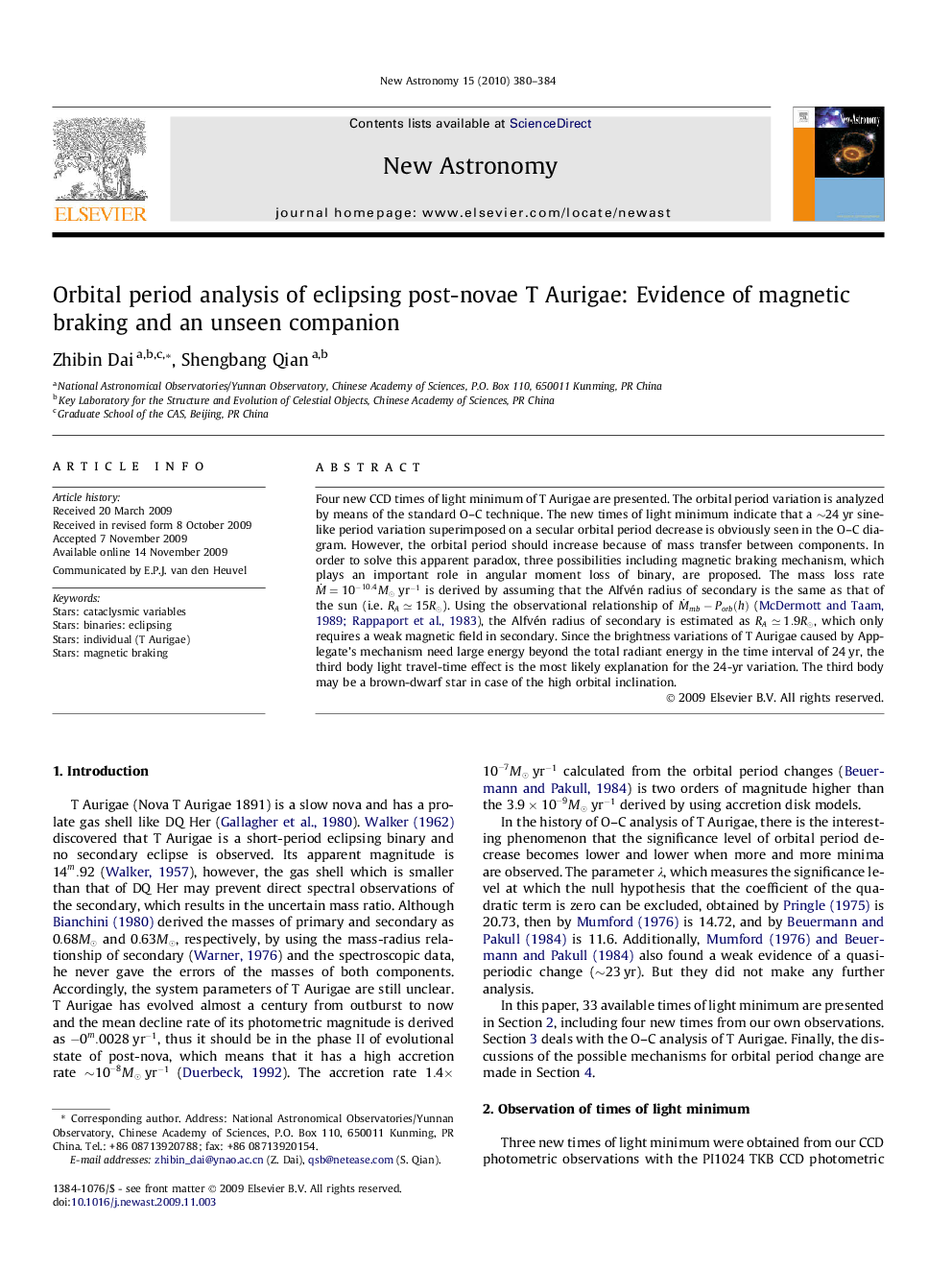| Article ID | Journal | Published Year | Pages | File Type |
|---|---|---|---|---|
| 1779739 | New Astronomy | 2010 | 5 Pages |
Four new CCD times of light minimum of T Aurigae are presented. The orbital period variation is analyzed by means of the standard O–C technique. The new times of light minimum indicate that a ∼24 yr sine-like period variation superimposed on a secular orbital period decrease is obviously seen in the O–C diagram. However, the orbital period should increase because of mass transfer between components. In order to solve this apparent paradox, three possibilities including magnetic braking mechanism, which plays an important role in angular moment loss of binary, are proposed. The mass loss rate M˙=10-10.4M⊙yr-1 is derived by assuming that the Alfvén radius of secondary is the same as that of the sun (i.e. RA≃15R⊙RA≃15R⊙). Using the observational relationship of M˙mb-Porb(h) (McDermott and Taam, 1989 and Rappaport et al., 1983), the Alfvén radius of secondary is estimated as RA≃1.9R⊙RA≃1.9R⊙, which only requires a weak magnetic field in secondary. Since the brightness variations of T Aurigae caused by Applegate’s mechanism need large energy beyond the total radiant energy in the time interval of 24 yr, the third body light travel-time effect is the most likely explanation for the 24-yr variation. The third body may be a brown-dwarf star in case of the high orbital inclination.
